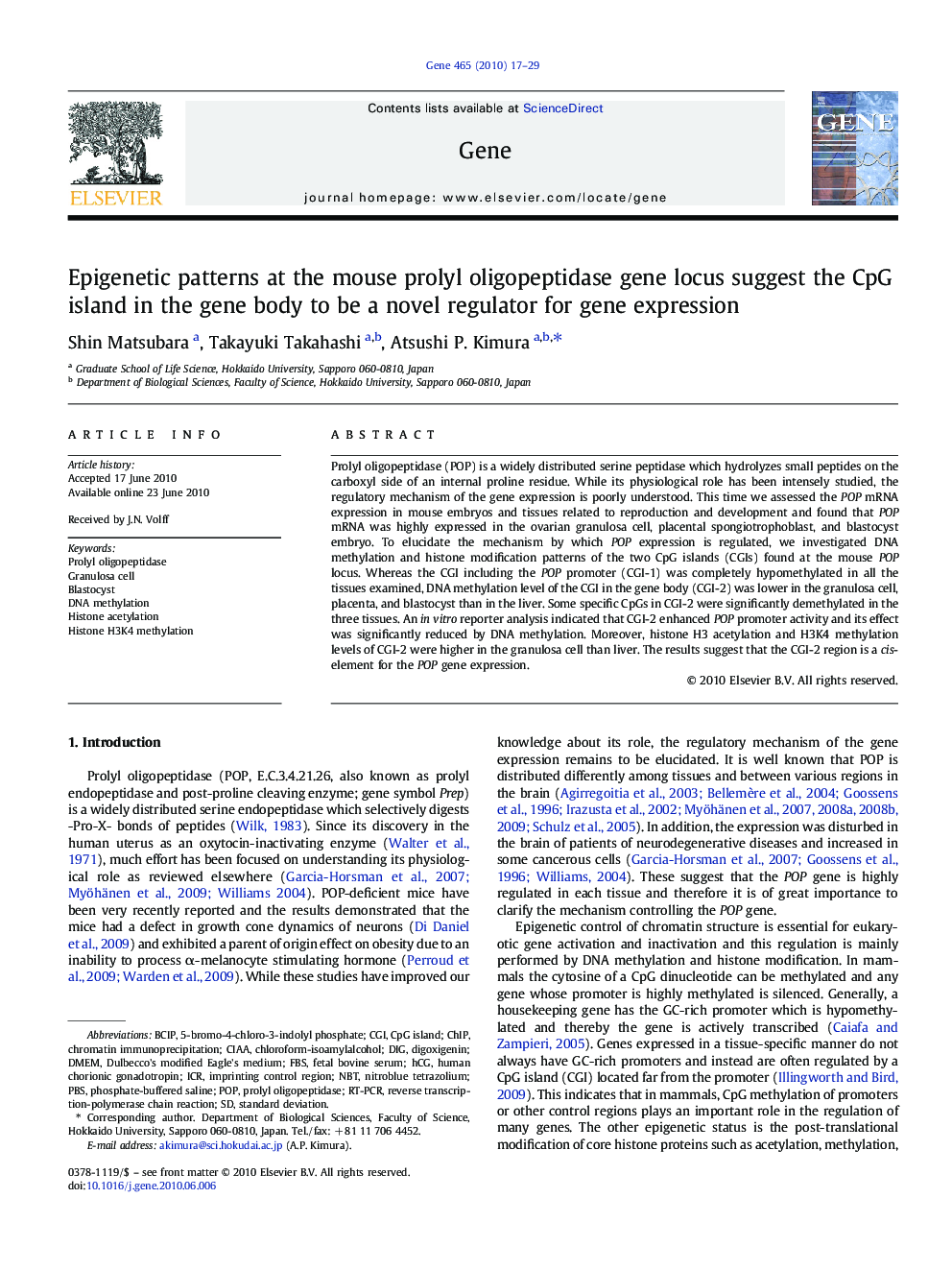| Article ID | Journal | Published Year | Pages | File Type |
|---|---|---|---|---|
| 2818570 | Gene | 2010 | 13 Pages |
Prolyl oligopeptidase (POP) is a widely distributed serine peptidase which hydrolyzes small peptides on the carboxyl side of an internal proline residue. While its physiological role has been intensely studied, the regulatory mechanism of the gene expression is poorly understood. This time we assessed the POP mRNA expression in mouse embryos and tissues related to reproduction and development and found that POP mRNA was highly expressed in the ovarian granulosa cell, placental spongiotrophoblast, and blastocyst embryo. To elucidate the mechanism by which POP expression is regulated, we investigated DNA methylation and histone modification patterns of the two CpG islands (CGIs) found at the mouse POP locus. Whereas the CGI including the POP promoter (CGI-1) was completely hypomethylated in all the tissues examined, DNA methylation level of the CGI in the gene body (CGI-2) was lower in the granulosa cell, placenta, and blastocyst than in the liver. Some specific CpGs in CGI-2 were significantly demethylated in the three tissues. An in vitro reporter analysis indicated that CGI-2 enhanced POP promoter activity and its effect was significantly reduced by DNA methylation. Moreover, histone H3 acetylation and H3K4 methylation levels of CGI-2 were higher in the granulosa cell than liver. The results suggest that the CGI-2 region is a cis-element for the POP gene expression.
